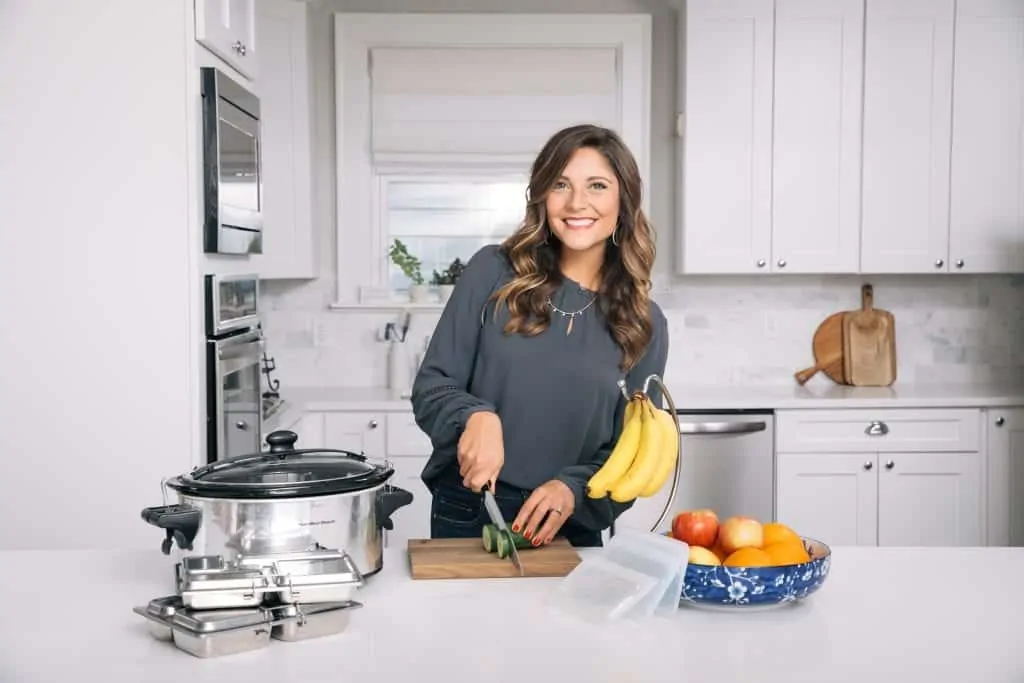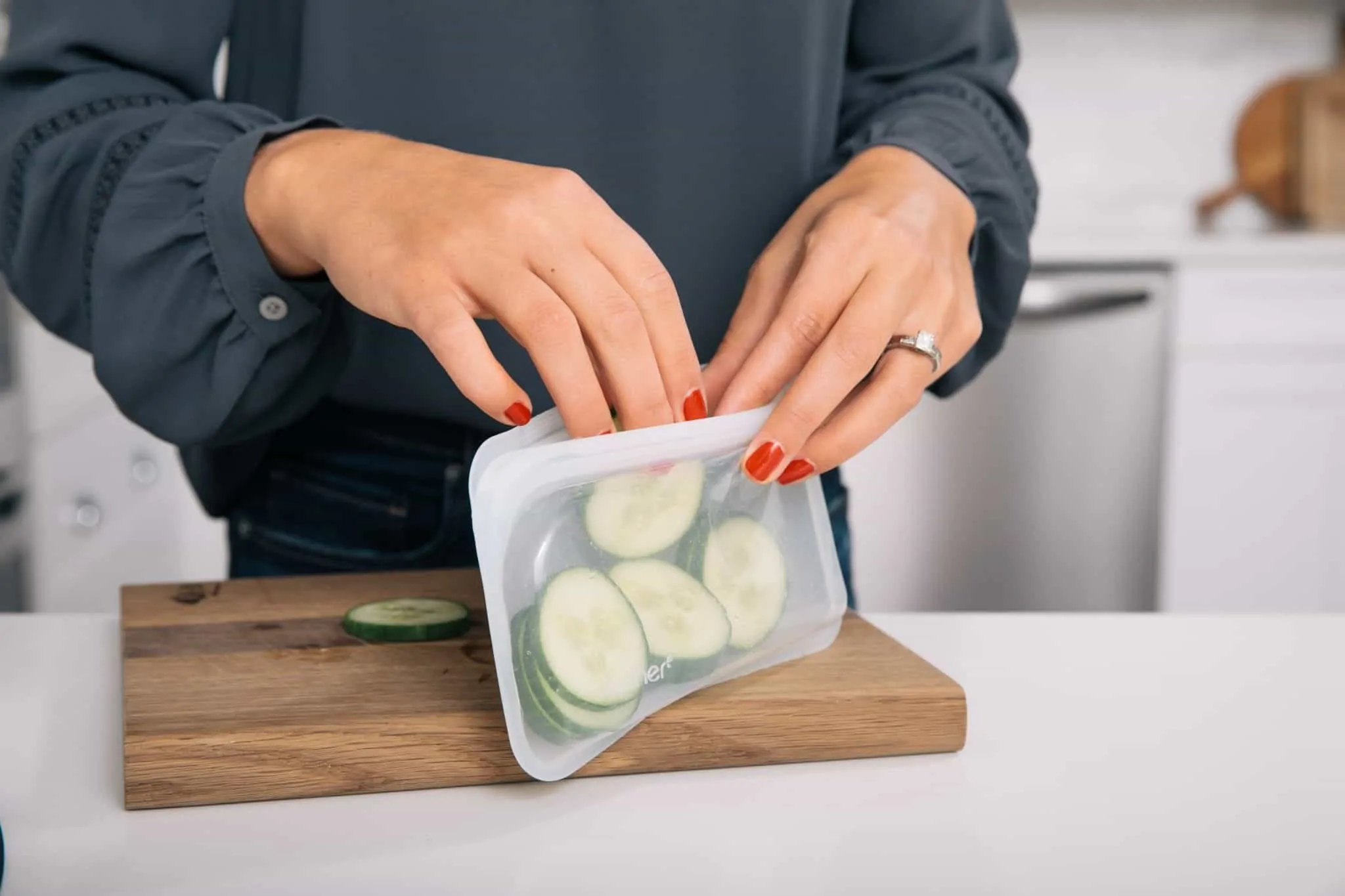
This post outlines many common questions I receive when it comes to feeding families. I share my tips to help parents provide a nutritious and balanced diet at meal time.
Today, I am talking with a local group of moms about nutrition for kids, tips for feeding families. In my talk, I’m answering common questions I hear online and in person.
If you have more questions about feeding families or your children, please let me know in the comments section!
Question – What should parents focus on when it comes to feeding kids?
- Nutrition isn’t black and white or healthy and unhealthy, a lot of it depends on the foods your family enjoys eating (including cultural preferences and family traditions), your schedule, resources available to bring food into the home, current health conditions, appetite, etc.
- Incorporate a variety of foods to make sure kids are getting the nutrients they need such as seafood, whole grains, vegetables in every color, fruits in every color, legumes, nuts, seeds.
- When you are feeding your kids, you aren’t just feeding them food you are also teaching them habits for the rest of their lives. Because of this, I am not focusing on certain numbers, grams or ounces to live by.
- Children are naturally intuitive eaters and their tastes are changing all the time. That means sometimes your kids may want seconds and sometimes they may not finish their plate, sometimes they may think broccoli is gross, and other times they may eat it without saying a word. During times like this, offer the food and ask kids to try once, then move on and don’t make a big deal out of it either way.
Question – How to make healthy food kids will eat
- Adding nutritious food into foods your kids already love. For example, pumpkin is a great source of vitamin A and fiber, and you can easily mix pumpkin puree into tomato sauce to put on a homemade pizza or pasta dish, you can puree many vegetables and add them to muffins or quick breads.
- Modeling good food behavior – you probably already know this but kids are always watching! If you eat a well balanced diet and don’t fuss over not liking items that are more nutritious, your kids will pay attention to that. On the same note, if you don’t love a food and always pick it off of a dish or make a comment about not liking said food, your kids will also notice that behavior.
- Getting kids to help in the kitchen is a GREAT way to help them try new foods.
- Talk about customizing, making recipes fit your family (view cooking as an experiment!)
- Building meals: protein, vegetable, fruit, try allowing your children to choose the portions
How to include kids in the kitchen
- I have used Plastic Lettuce Knives with kids in the kitchen and they love it! They are great for cutting all kinds of vegetables including cucumber, herbs, bell pepper, zucchini, greens, etc and they work great on fruit too.
- Using a tool like Plastic Lettuce Knives is great when they are too young to learn how to use a sharp knife, but you can still teach them knife skills and the importance of safety in the kitchen.
- Stirring and dumping – talking through measurements then having your child dump the item into the bowl and help you stir is another great way to get them involved.
- Explaining things as you go is an excellent way to encourage thought process about procedures and the order of operations, math, and reading.
- If your child helps with a dish, name it after them! I nannied a family in Colorado and we frequently made “Anna’s Special Salad” and “Anna’s Famous Guacamole” and after only a couple of times of making each dish with me, she was making the dish and experimenting with a little more of this or a little less of that in no time (and eating it when we served it on the dinner table).
- Including your kids in the kitchen may take a little extra time, but these are great learning and bonding moments.
Tips for meal planning
- I have an entire blog post on meal planning you can reference, but here are few takeaways
- Start with one meal. I focus on mainly dinner. We always have things in the house for breakfast and lunch, but during the work week I find that Brian and I enjoy eating similar things each day so we can “automate the task” and not have to worry about being super creative for breakfast and lunch with lots of change day to day.
- Plan for 4 meals for 7 days. This will allow you to use any leftovers you may have or make a larger batch recipe just so you have leftovers to eat another day (cook once eat twice!), clear out the fridge and make a random meal(s) to prevent food items from going bad, and it will allow you to have wiggle room if someone invites you out to eat or if you end up getting home later than planned, etc.
- Consider what you have going on in your schedule. In my meal planning .pdf I have a space for notes and I love using that to note when Brian has a dinner meeting, I have a French class, or if we have friends coming over. This allows me to plan a meal that fits our schedule and helps make things easier rather than harder. Example: on Tuesdays I am taking French lessons in the evening, so I typically plan on eating leftovers that night because I need to be out the door by 5:15pm. If I was planning an elaborate/fancy/new recipe for Tuesdays, I would realistically need to start cooking around 3:30, which would cut into my working hours.
- Plan only 1 elaborate/fancy/new recipe a week. Cooking takes time to prep, time to clean, and it takes up quite a bit of energy – especially if it is not something you do all the time. This Meal Planning Guide is a tool to make your life easier, and I’m telling you right now that planning more than one elaborate/fancy/new recipe a week will not feel easy.
- Other tips are:
- Include the family (ask each family member for suggestions)
- Stick with routine – Meatless Monday, Taco Tuesday, etc etc sometimes working within parameters makes choosing the dish to make a lot easier, and then when you make a dish that is a hit your family will look forward to it the next time you have “Slow Cooker Wednesday” or whatever day it was when you served it.
Simple snack ideas
- There is a time and a place for snacks, but I think it’s also important to remember that kids will be more likely to eat what you serve them at mealtime if they are truly hungry.
- Snacks can be simple, nutritious satisfying options that you can easily serve at home or on the go if necessary (sliced fruit and vegetables, small cups of plain Greek yogurt with slightly thawed frozen fruit mixed in, homemade granola bars, etc) .
In conclusion: Remember that your kids are wired to listen to their bodies. Some days they may eat more, some days they may eat less, some days they may love broccoli, and other days it may sit on the plate. Don’t make a big deal about it, because it really isn’t a big deal. If you focus on feeding your child real food including a variety of vegetables, fruit, protein foods, whole grains, and healthy fats like nuts, seeds, olives and avocado most of the time, you are doing a great job.
Resources for feeding families
- Real Mom Nutrition – free downloads including 16 Game Changing Tips for Feeding Kids and a Try New Foods Chart, tons of recipes
- Love her post explaining “What Should Kids Drink?”
- The Lean Green Bean – ebooks including 50+ Toddler Meal Ideas (with pictures!)
- The post How to Help Picky Eaters Try New Foods is a great resource!
- Plant Based Juniors – Tons of resources and recipes for introducing food to your children and a pregnancy guide.
- My site has tons of recipes!
Related Posts
Based on this post, here are a few similar ones you should check out.





Leave a comment